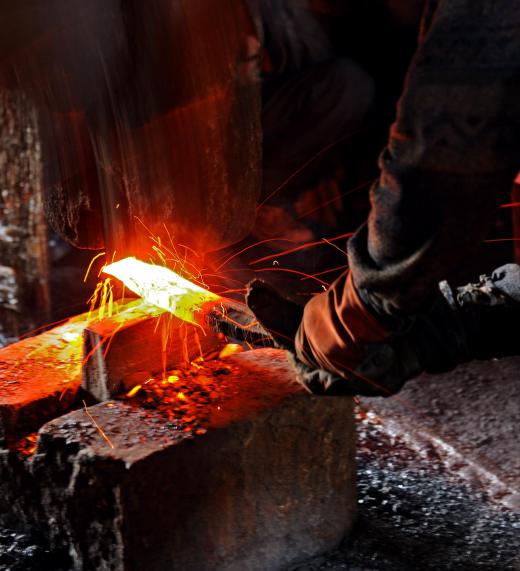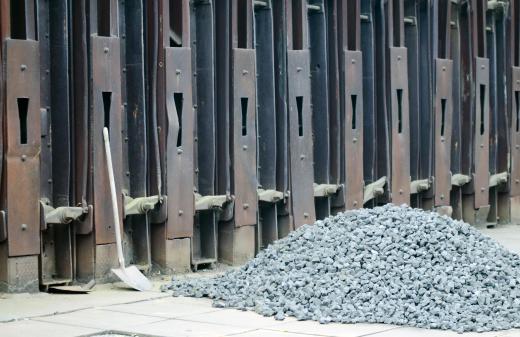Forging iron is the metal used in a smithing process to create iron goods. Depending on the type of product and methods used, the metal is likely pig iron or wrought iron. Pig iron is a very base form of the metal; it is loaded with imperfections and used mainly as a method of transporting iron to a manufacturing or purification location. Wrought iron is a purified form of iron that is used to make finished goods. In modern metal working, carbon steel is often used instead of wrought iron; the two metals share many properties and are nearly interchangeable.
Pig iron is a basic form of forging iron. This is one of the first processed forms of iron after it is removed from iron ore. The raw iron is mixed with coke and limestone to produce a white, chalky and irregular form of iron.

Originally, the iron was cast into a mold made of sand. This mold had central channels with small branches down their length. After the metal cooled in the mold, the smaller ‘pigs’ could simply be broken off the central channel, or ‘sow.’ This method is rarely used today; in fact, most pig iron slated for use inside the same steel plant never cools from liquid form. In general, the only time pig iron is allowed to solidify is when it is packaged for shipment or resale.

Pig iron is a very base form of forging iron; it has extremely high carbon content and is often full of impurities. At this point, the iron is rarely used for anything but re-manufacturing. It is often made into gray iron, an iron and steel mixture that has several industrial applications. This forging iron may also become wrought iron or carbon steel if it has relatively few impurities and enough carbon. If the iron isn’t suitable for any of these, it may become common steel after several rounds of purification.
The other common form of forging iron is wrought iron. This iron is everything pig iron is not; it is clean, strong and ductile. Wrought iron used to be the major form of workable iron, but its place has been taken over by carbon steel.
Wrought iron is dissimilar from pig iron due to its high carbon content and low impurities. These are the same properties common in carbon steel. The metals have a similar appearance to the naked eye and very similar metallic properties. As a result, the slightly more versatile metal has taken over the position of wrought iron in nearly every case. When an item is described as being made of wrought iron, it is most likely made of carbon steel instead.
